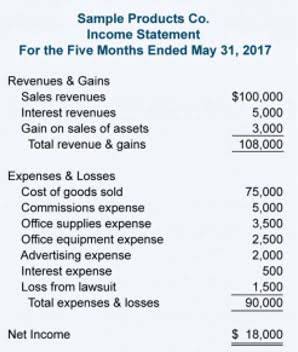
A primary cause is sustained net losses, which occur when a company consistently spends more than it earns. High operating costs, declining sales, or ineffective cost management contribute to this situation. For instance, a company in a competitive industry may struggle to maintain market share, leading to reduced revenue and pressure on margins.
Can there be negative ratios?
In QuickBooks Online (QBO), retained earnings is an Equity account that represents the company’s profits to be reinvested or used later. Thus, when retained earnings are negative, their balance shown under the stockholder’s equity on the balance sheet is also negative. If a company’s revenues are greater than its expenses, the closing entry entails debiting income summary and crediting retained earnings. In the event of a loss for the period, the income summary account needs to be credited and retained earnings reduced through a debit.
Shareholder Distribution negative balance

What if the corporation has issued dividends or filed T5 from a loss-making business? If you have filed a T5 information return in rush just to meet the deadline, it can be amended or cancelled subsequently. The dividend payout ratio can be calculated as the yearly dividend per share divided by the earnings per share (EPS), or equivalently, the dividends divided by net income (as shown below). Dividends and retained earnings are closely linked, since dividend payments come from those earnings. Dividends are often paid quarterly, but may also be paid annually or semi-annually. Note that in the vast majority of cases, a company cannot pay a dividend with negative retained earnings or that will put retained earnings into a negative Record Keeping for Small Business position.

Post navigation

After almost a decade of experience in public accounting, he created MyAccountingCourse.com to help people learn accounting & finance, pass the CPA exam, and start their career. Ask questions, get answers, and join our large community of Intuit Accountants users. You have clicked a link to a site outside of the Intuit Accountants Community. By clicking “Continue”, you will leave the community and be taken to that site instead.
s corp final return with negative ending AAA
- Companies can also choose to issue additional shares or obtain capital through borrowing.
- Negative Balances Can Indicate Bad Finances While negative balances on your balance sheet are usually not good, they are probably not the end of the world.
- Retained earnings are the balance sheet items that record under equity sections.
- Negative retained earnings can be an indicator of bankruptcy, since it implies a long-term series of losses.
When a company consistently experiences net losses, those losses deplete its retained earnings. Prolonged periods of declining sales, increased expenses, or unsuccessful business ventures can lead to negative retained earnings. Positive retained earnings signify financial stability and the ability to reinvest in the company’s growth.
Sonoma County Carpentry: Building A Business Rooted In Family And Tradition
I have spoken to the client asking for further info and a written response from his previous accountant. At this stage I am not even comfortable requesting professional clearance from p acct and asking for explanations….. The case was about a purchase of own shares that went wrong, so I couldn’t see the relevance to the OP’s question here.

Negative retained earnings may receive increased scrutiny and potentially result in a downgrade of a company’s credit rating, which can have implications for borrowing costs and access to capital. Negative retained earnings can occur in any industry, as it heavily depends on a company’s financial management, market conditions, and corporate strategy. Retained earnings are a measure of a company’s profitability and financial health. They represent the portion of earnings that is not distributed to shareholders as dividends but is retained by the company for various purposes.
Restructure the business:
Renegotiating terms with creditors to secure better interest rates or extending debt maturities can ease short-term financial pressures. Companies might also consider selling non-core or underperforming assets to generate cash and strengthen retained earnings. This Online Accounting approach allows management to focus on core business areas with greater growth potential.
Are dividends always paid from retained earnings?

When a company generates net income, it is typically recorded as a can you have negative retained earnings credit to the retained earnings account, increasing the balance. In contrast, when a company suffers a net loss or pays dividends, the retained earnings account is debited, reducing the balance. If a company decides not to pay dividends, and instead keeps all of its profits for internal use, then the retained earnings balance increases by the full amount of net income, also called net profit. When a company pays dividends to its shareholders, it reduces its retained earnings by the amount of dividends paid. On one hand, high retained earnings could indicate financial strength since it demonstrates a track record of profitability in previous years. On the other hand, it could be indicative of a company that should consider paying more dividends to its shareholders.
